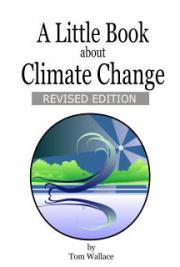CRACK & HIPPY CRACK
Crack cocaine (or crack) has wreaked immeasurable havoc on many people, in particular some inner city African American communities. Crack was and still is a Devil-send illicit drug, at its core it was a devious and calculated plan.
As conveyed by Elaine Brown, former Chairman of the Black Panther Party, “Never in America have we ever had a moment before crack, when our own mothers would turn on their children, would turn out the children and not take care of them ... Our mothers, Black women, were always going to take care of everybody’s children. You can look in the Black house. When everything else fails, somebody’s grandmother or mother will take care of somebody’s children ... There was always a big mama
... When we started having women to put their own children out for prostitution to get crack, well, I knew it was all over ... And then, on top of that, they used that as an excuse to lock us all up.” (By Charlene Muhammad, Updated December 16, 2014; finalcall.com: Crack, The CIA and Black America's Drug Crisis) Crack entered the scene because of major cocaine smuggling operations, increased demand, and insurmountable money to be made, and a marked cocaine glut, resulting in a price reduction of up to 80 percent for cocaine in some regions. As is often the case with illicit drugs, manufacturers and low-level dealers search for a new drug to sell, even if it only has a slightly different chemical content from a pre-existing drug. Regarding illicit drugs, even a slight change in the chemistry of a drug can produce something quite new and marketable.
Chemists in this enterprise are professionals who understand illicit drugs at the chemical and compound levels. Cooks and some dealers are amateurs who learn a specific formula in order to manufacture a specific drug. Dealers began to add sodium bicarbonate or ammonia to cocaine to make it more volatile and variable producing crack. Crack is considered by many people to be cocaine’s bigger sister because it is considerably more potent.
Initially crack appeared in small amounts in major cities in the early 1980s. At first, police were puzzled by the sudden appearance of the rock-like, irregularly shaped material, but chemical analysis indicated that it was a crystal form of cocaine, white, pale rose, or white coloured. Mass production and widespread use of crack became quite evident in the mid- 1980s.
The devastation crack wreaked on users in the Northeast U.S. during the 1980s is a phenomenon we must never forget, "You’d see people smoking and just going mentally unstable. Crack puts you in good spirits, but if there {is} anything wrong with you — or anything mixed with it — it puts you into a truly psychotic state. You’d watch it happen with the addict right in front of you — often very dangerous and very violent." (Cocaine True, Cocaine Blue, by acclaimed and distinguished documentary photographer Eugene Richards; May 23, 2014; aljazeera.com: Documenting the ravages of the 1980s crack epidemic)
Crack was more convenient than powdered cocaine, easily smoked and only needing a temperature of around 195 Fahrenheit (90.5 Celsius) to evaporate, cocaine hydrochloride needs to be heated at 370 Fahrenheit (187.7) to evaporate. The name crack came about from the cracking or popping sound it makes during heating. Crack is customarily smoked or freebased (the crack is heated until it liquefies then the vapours are inhaled through a pipe).
A couple of rocks of crack can be purchased for only a few dollars allowing people with limited funds to get high. Soon, crack mushroomed in poor neighbourhoods. Unfortunately, the short-lived intense high of crack was fleeting and highly addictive, a recipe for a very lucrative drug trade, addiction, destroyed lives, and disaster. Expectedly, many crack addicts would do anything to acquire another high. The ravages of crack lasted for about 20 years, primarily targeting poor black neighbourhoods. The peak years (1984 - 1990) are commonly referred to as the ‘crack epidemic’. Yet another stereotype loomed; black neighbourhoods were rife with crack.
As conveyed by Audrey, “I lived with a crack addict for nearly a year. I loved that addict, who was my boyfriend, with all my heart but I could not stick [with] it anymore ... The police stopped and searched me; we were raided at 6:00 A.M. My ex stole incessantly and couldn’t tear himself away from his pipe think crack is more evil than heroin—one pipe can be all it takes to turn you into an immoral monster.” (drugfreeworld.com: What is Crack Cocaine?)
THE FOLLOWING ARE STREET NAMES FOR CRACK:
Bad-rock Devil Rocks Rock Star
Base Fat Bag Roxanne
Ball Gravel Scotty
Beat Hard Ball Studdy
Biscuits Hard Rock Smoke House
Boost Hell Teeth
Boulders Jelly Beans Tornado
Brick Kibbles n' Bitts Work
Bump Kryptonite Mug
Bunk Moonlight
Cakes Nuggets
Casper Onion
Chalk Pebbles
Chemical Piaeras (Spanish)
Cloud Piece
Cookies Ready Rock
Crack Roca
Crumbs Rock Candy
Crunch & Munch
Cubes
THE FOLLOWING ARE POSSIBLE SHORT-TERM EFFECTS OF CRACK USE:
-
An immediate powerful surge of euphoria and bliss (virtually guaranteed)
-
Dangerous elevation in blood pressure
-
Rapid heartbeat (possible cardiac arrest) and other respiratory complications; stroke or death
-
Rise in temperature or low grade fever
-
Shortness of breath
-
Seizure
-
Lung trauma
-
Dilated pupils
-
Blisters or burns on the lips from smoking a crack pipe
-
Throat problems
-
Irritability and hyperactivity
-
Excited state
-
Coughing up dark phlegm
-
Bloodshot eyes or dilated pupils
-
The shakes
-
Increased talkativeness, hoarse speech
-
Abnormal animation
-
Insomnia
-
Dry mouth
-
Excessive licking of the lips
-
Jaw clenching, tooth injuries
-
Easily startled
-
Loss of appetite
-
Headache
-
Onset of psychotic symptoms, paranoia, depression, aggressive beliefs and violent behaviour
-
A powerful craving for an additional hit beginning as soon as the present high diminishes (the crash or nosedive). Many crack addicts spend years or the remainder of their lives chasing the next high.
THE FOLLOWING ARE POSSIBLE LONG-TERM EFFECTS OF CRACK USE:
-
Cardiovascular and respiratory problems
-
Seizures, convulsions, coma
-
An increase in tolerance (needing more and more of the drug to acquire the same level of satisfaction)
-
Extreme psychological addiction that must be chased after continually – frequent cravings, if not satisfied are followed by withdrawal symptoms
-
Sexual dysfunction, reproductive problems
-
Mental and physical problems, complications, and diseases
-
Delirium: A severe disturbance in mental capacities bringing about confused thinking and diminished awareness of the person’s environment
-
Crack lip: Painful bruising, sores, blisters, caused by exposure to the heated crack pipe
-
Long-term insomnia and other sleep disorders
-
Referred to as ‘coke bugs’, ‘crack bugs’ or formication: A powerful tactile hallucination - the crack abuser feels like bugs are crawling on or beneath the skin. The user scratches excessively, resulting in scratch marks on the surface of the skin, in severe cases bleeding and infection can occur. This mentally challenging ordeal opens the floodgates to other problems.
-
Gastrointestinal problems, severe malnutrition
-
Oral and dental problems
-
Toxicity resulting from regularly inhaling harmful fumes
-
Crack lung: Permanent scarring and damage to the lungs
-
Damage or complications to kidneys, heart, and liver
-
Trouble with the law, damaged social relations, broken marriages, neglect and inability to properly take care of oneself
THE FOLLOWING ARE POSSIBLE CRACK OVERDOSE SYMPTOMS. NOTE: FOR ANY SUSPECTED DRUG OR ALCOHOL OVERDOSE-RELATED PROBLEM CALL 911 IMMEDIATELY OR THE RELEVANT PHONE NUMBER IN YOUR AREA) ALWAYS ASSUME THAT THE OVERDOSE IS A VERY SERIOUS MATTER:
-
Changes in body temperature (may increase at the outset but may decrease if serious complications ensue)
-
Respiration rate (may increase at the outset but may decrease if serious complications ensue)
-
Pulse (may increase at the outset but decrease if serious complications ensue)
-
Commonly a dosage over 5 grams will result in a heart attack
-
Slowing of heart rate
-
Moist, sweaty skin
-
Itching
-
Narrowed pupils
-
Lung trauma and bleeding, coughing up black phlegm
-
Chest pain, heaviness of the chest
-
Difficulty breathing, shallow breathing
-
Very painful headache
-
Nausea, vomiting, diarrhoea
-
Hyperactivity
-
Agitation
-
Aggressive or violent behaviour
-
Confusion
-
Disorientation
-
Excessive tremors
-
Hallucinations, paranoia
-
Loss of consciousness
-
Seizures, convulsions
-
Permanent irreversible mental, physical, financial, and social debilitation and loss (a plethora of lifelong problems, unfortunately in severe cases some of which will never go away)
-
Stroke
-
Death
The survival rate







